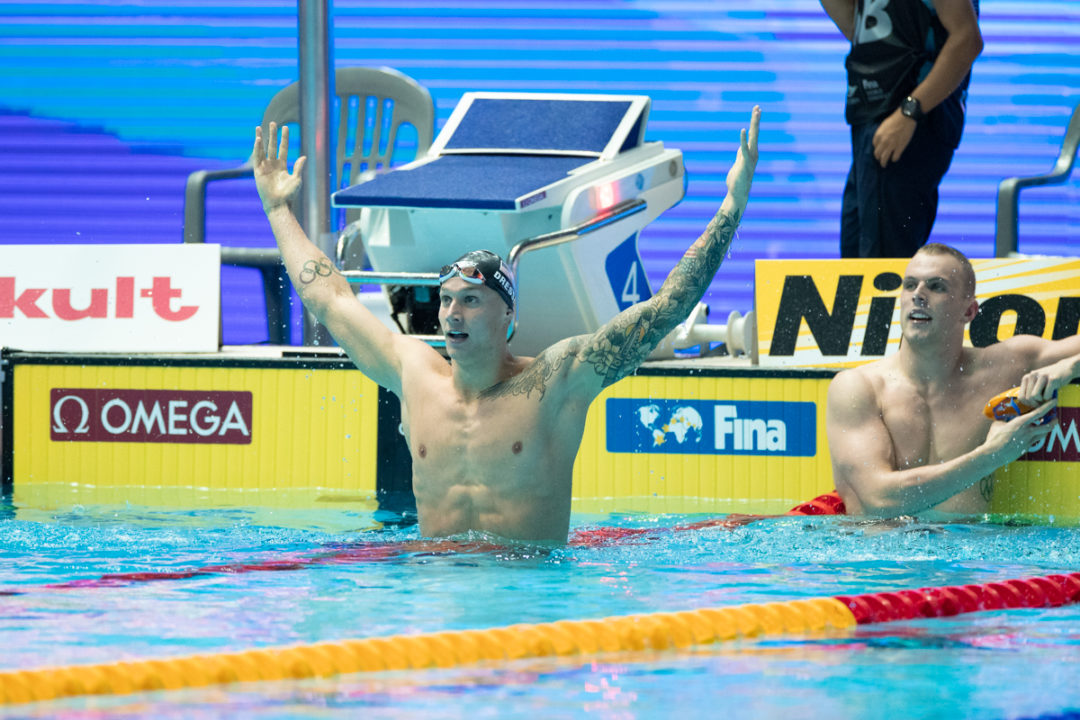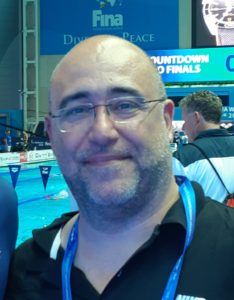Let’s use this time to study.
In this crazy season, most swim meets around the world have been canceled. In some countries it is difficult to swim and when it is possible swimming conditions are very far from being standard.
Waiting for the situation to normalize, we can use this time to study, to define the target and in this perspective I started to analyze the finals of the last World Championship in Korea.
My goal is to have a great picture of every race. Let this serve as the introduction to my work, with the specific race-by-race analysis coming over the next few weeks.
I analyzed all the athletes in the finals and I calculated the average of all the finalists, the average of the top three finishers, and the average of the last five finishers. I suggest we should study the first one.
It is interesting to study the mechanical evolution of the main kinematic parameters and to see the main difference from one athlete to the other but above we should consider all the averages.
Before taking into consideration every single race I would like to explain my report and the main parameters applied, even if most of the coaches already know all these data.
THE DATA
I split the race in part in order to study the evolution of every 50 meters:
- 15 meters – Split and lap time – Velocity (1)
- 15-25 meters – Split and lap time – Velocity – Stroke rate(2)and stroke tempo(3) – Distance per stroke(4) – stroke index(5)
- 25-35 meters – Split and lap time – Velocity – Stroke rate and stroke tempo – Distance per stroke – stroke index
- 35-45 meters – Split and lap time – Velocity – Stroke rate and stroke tempo – Distance per stroke – stroke index
- 45-50 meters – Split and lap time – Velocity – Stroke rate and stroke tempo
In each analysis, you will be able to see both the 50 meter splits, as well as the 25 meter splits.
In the underwater phase analysis, I measured the breakout time (6) and the breakout distance (7). Then I measured the average speed of the 50 m and swimming and the underwater phase speed. In this way I can calculate the difference among these data and understand the efficiency of the underwater phase.
VALUES
There are the values for each 50m of the swim and the total for 100 meters.
First of all in the charts we can see the speed evolution and the comparison between stroke rate, distance per stroke and speed to have a visual picture of the parameters.
- (1) Velocity or Speed: it is calculated in meter per second
- (2) Stroke rate: it is the frequency of the arms action; it is calculated in cycles per minute
- (3) Stroke tempo: it is the time of one cycle
- (2)(3) Stroke rate and stroke tempo: they are the same parameters, taken just from a different point of view and in some countries it is more common to use the first one rather than the second one
- (4) Distance per stroke or stroke length it the measure of the advance of the body per cycle
- (5) Stroke index is an efficiency index. The formula is speed x dps(distance per stroke). The higher this index is the more efficient the swimming. Please note that “more efficient” doesn’t necessarily mean “faster”.
- (6) Breakout: it is the moment when body, usually the head, breaks the surface in the end of the underwater phase. Thebreakout time is the underwater phase time. For the start it is the time between the signal and the breakout. For the turns it is the time between the touch of the wall and the breakout.
- (7) Breakout distance: it is the measure of the underwater phase, the distance between the wall and the breakout.
The first final we will analyze will be the men’s 100 meter freestyle. It will be interesting to see the construction of the victory of the American superstar Caeleb Dressel.
This story comes courtesy of STEFANO NURRA
- Analyst of Turkish Swimming Federation
- Analyst of Energy Standard
- Owner and Founder of Swim Lab


Greatly looking forward to this!